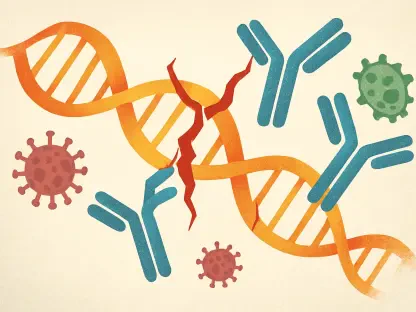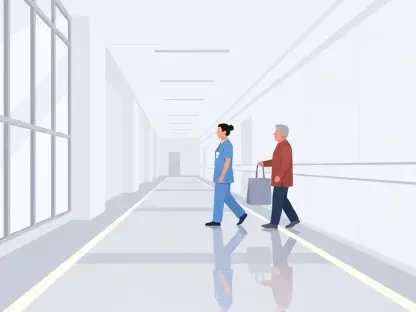What happens when a disease, hidden in plain sight, claims over a million lives each year, yet remains stubbornly resistant to modern medicine? Tuberculosis (TB), caused by Mycobacterium tuberculosis, stands as one of humanity’s oldest and deadliest foes, striking hardest in vulnerable communities across the globe. With a vaccine that falls short for most adults, the world has long awaited a game-changer. Now, researchers at the Massachusetts Institute of Technology (MIT) have ignited a spark of hope with a groundbreaking discovery that could redefine how this battle is fought.
This revelation isn’t just another lab experiment; it’s a potential lifeline for millions. The MIT team has pinpointed specific components of the TB bacterium that could trigger a powerful immune response, offering a fresh path toward an effective vaccine. Their work, driven by cutting-edge science, promises to challenge the status quo and address a crisis that disproportionately ravages low-resource regions.
Why TB Still Haunts the World
Tuberculosis thrives in conditions of poverty and overcrowding, spreading through the air with devastating ease, especially in densely populated areas with limited access to healthcare. The current vaccine, Bacille Calmette-Guérin (BCG), offers some protection to children but fails to shield adults from pulmonary TB, the most common and lethal form. With over 1 million deaths annually, the disease’s persistence underscores a critical gap in global health defenses.
Drug-resistant strains add another layer of complexity, rendering standard treatments ineffective in many cases. This escalating threat has pushed scientists to rethink immunization strategies, focusing on innovative approaches that target the bacterium’s vulnerabilities. MIT’s recent efforts stand out as a beacon in this urgent quest for a solution.
The stakes couldn’t be higher. As TB continues to outpace many other infectious diseases in mortality, the need for a reliable vaccine grows more pressing by the day, especially in regions where healthcare systems are already stretched thin.
Unveiling a Scientific Milestone
At the heart of MIT’s breakthrough lies a meticulous study led by Associate Professor Bryan Bryson and Professor Forest White. Their team embarked on an ambitious mission, screening over 4,000 TB proteins to identify those capable of sparking a robust immune defense. Using advanced mass spectrometry, they isolated 27 peptides from 13 proteins frequently displayed on infected human cells via Major Histocompatibility Complex (MHC) class II molecules, which signal helper T cells to combat the infection.
Further testing revealed that 24 of these peptides triggered T cell responses in samples from individuals previously exposed to TB. This discovery points to their potential as key ingredients for a new vaccine, moving beyond the outdated whole-bacterium approach of BCG. The precision of targeting specific peptides marks a significant shift in how TB immunization could be designed.
The researchers didn’t stop there. They harnessed mRNA vaccine technology, encoding TB proteins like EsxA and EsxB from the Type 7 Secretion System (T7SS), known for their role in the bacterium’s destructive capabilities. By directing these mRNA designs to cell lysosomes, they dramatically enhanced peptide presentation, paving the way for a stronger immune reaction.
Voices of Innovation and Grounded Realities
Associate Professor Bryan Bryson captures the essence of this leap forward: “By zeroing in on peptides that naturally activate T cells, we’re replicating the body’s own defense mechanisms, which could outstrip BCG’s effectiveness.” Professor Forest White complements this view, noting, “mRNA technology allows us to control antigen presentation with unprecedented precision, unlocking new possibilities for vaccine development.”
These insights resonate beyond the lab walls. In communities hardest hit by TB, immune recognition of T7SS proteins often correlates with better disease outcomes, mirroring patterns observed in the study’s findings. This alignment suggests that the identified targets could have a real-world impact where it’s needed most.
The data speaks volumes as well—24 out of 27 peptides activated T cells in at least some donors, despite variations in individual immune profiles due to genetic differences in MHC molecules. This variability highlights a challenge but also reinforces the team’s strategy to combine multiple antigens, with a set of eight proteins showing promise for broader protection.
Charting the Path Ahead
Turning this discovery into a tangible solution requires clear, actionable steps. Vaccine development must prioritize the 13 identified TB proteins, particularly T7SS components like EsxA and EsxB, which stand out for their high immunogenicity and direct role in the bacterium’s harm. These targets offer a focused starting point for creating a potent defense.
Leveraging mRNA platforms to enhance antigen presentation in lysosomal compartments is another critical avenue. The study’s success in boosting immune responses through this method suggests a scalable approach that could adapt to other diseases as well. Expanding research to diverse populations remains essential to ensure that the proposed eight-protein combination addresses varied MHC profiles for global applicability.
Animal studies are the immediate next hurdle, as they will test the protective efficacy of these vaccine candidates before human trials, which are still several years away. From 2025 to 2027, the focus will likely shift toward refining these candidates and securing funding for broader testing, a timeline that underscores the urgency of sustained support for this work.
Reflecting on a Turning Point
Looking back, the strides made by the MIT team stand as a pivotal moment in the long struggle against tuberculosis. Their identification of specific TB peptides and the innovative use of mRNA technology have laid a robust foundation for a vaccine that could one day save millions. The journey ahead demands collaboration—between scientists, policymakers, and global health organizations—to transform these findings into accessible solutions. Accelerating clinical trials and ensuring equitable distribution in high-burden regions emerge as vital next steps to turn this scientific triumph into a public health victory.









